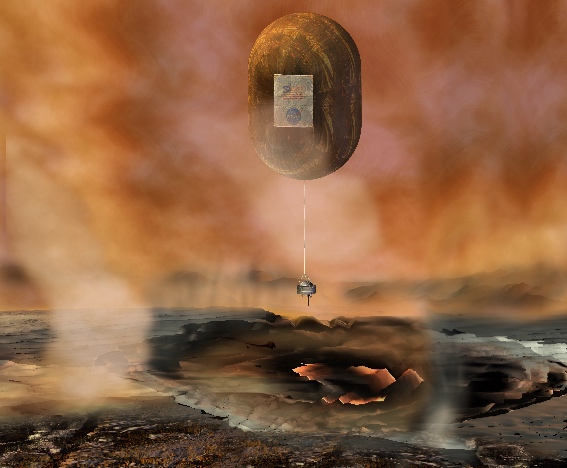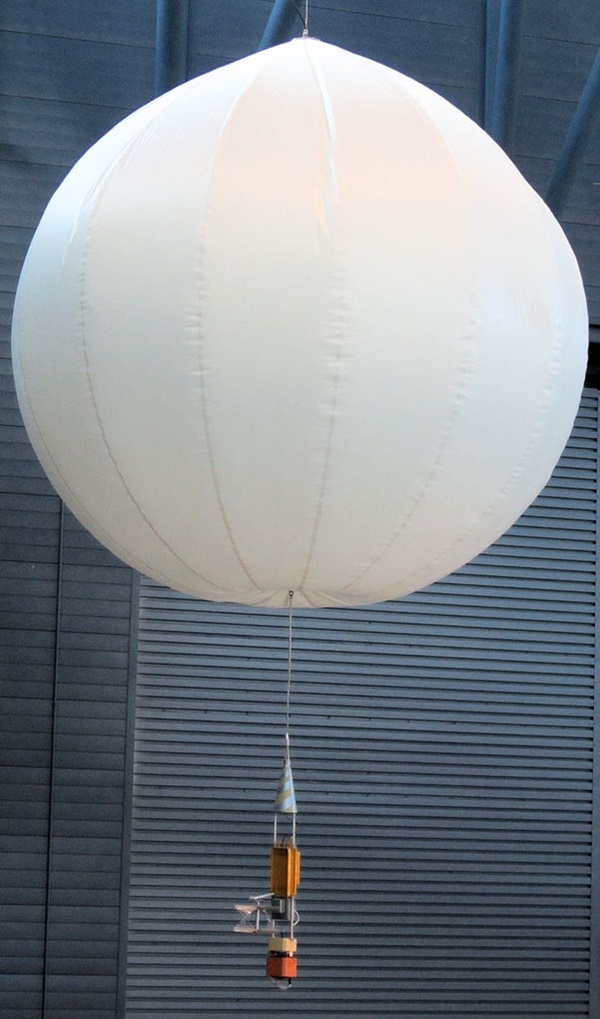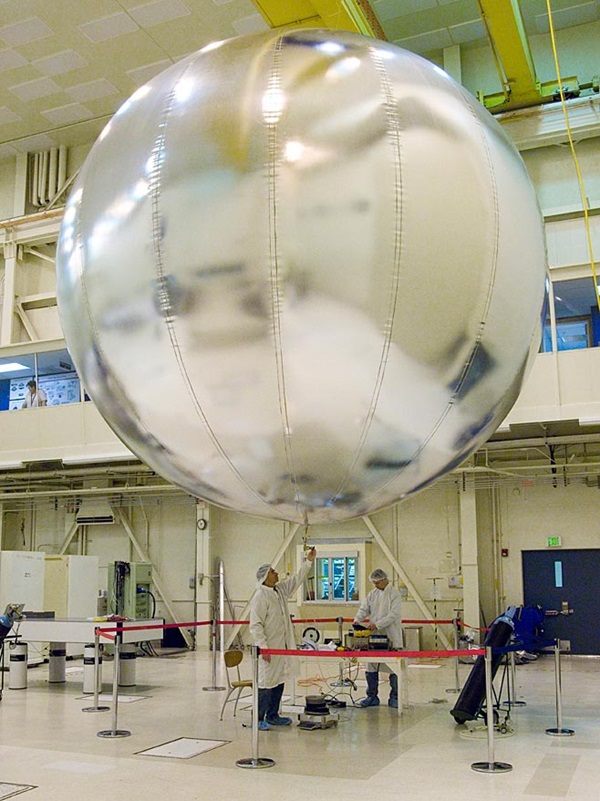Key Takeaways:
These harsh conditions mean that only a few missions have explored Venus up close. And while orbital spacecraft have given us a decent idea of what our sister world’s atmosphere and visible surface are like, we still know very little about its internal structure. But if we could determine what’s underneath Venus’ surface, we might learn how Earth’s nearest neighbor became such a nightmarish landscape.
On Earth, one way researchers study our planet’s interior is by decoding the cacophony of seismic waves that propagate along the surface after an earthquake. But does Venus have venusquakes? Some scientists think so. Although the world doesn’t have the same grinding plate tectonics as Earth, there is evidence of localized tremors. In the early 1990s, NASA’s Magellan spacecraft spotted a newly exposed steep bank (or scarp) and associated landslide, which researchers think may have been the result of a venusquake.
But if venusquakes exist, how can we tap into them to study Venus’ interior when a robotic mission can’t survive long on the surface? Well, the answer may come from above.
Free floating
Some 30 miles (50 kilometers) above Venus’ boiling surface, the temperature and pressure eases until it becomes comfortable even by Earth standards. That fact let the Soviets send large balloons on two Vega spacecraft missions in the mid 1980s. They floated high above Venus for two days, discovering new insights such as the surprising vertical movement of air within the atmosphere.
And, as first reported by Adam Mann in Science Magazine, some scientists think that a free-floating balloon could also be used to detect elusive venusquakes, so they’re working hard to prove the technology is up to the task. The researchers presented their work at the 2018 Fall Meeting of the America Geophysical Union.
The basic logic goes like this: Venus has a thick atmosphere, so any seismic vibrations along the surface could actually reverberate through the air, allowing a balloon to pick up on the signal.
If scientists could analyze these venusquake signatures and determine both where they came from and what caused them, they could start to decipher the internal structure of Venus like never before. This would reveal a great deal about one of the solar system’s most enigmatic worlds — and maybe even a bit about Earth, too.
Fake quakes
Because of the science that could be carried out by a balloon mission to Venus, a small, yet dedicated collaboration of researchers is now working hard to turn the idea into a reality. But before NASA seriously considers funding the venusquake-detecting balloon, the team must show they’re not just blowing hot air. They’ll need to prove the technology can work here on Earth, too — and that involves clearing a series of difficult hurdles. But they’re already well on their way.
On December 19, scientists set off a massive, 50-ton chemical explosion deep underground in the Mojave Desert. The blast — which was part of an experiment designed to test the United States’ ability to detect subterranean nuclear explosions — triggered an artificial earthquake so powerful it sent a low-frequency hum rippling through the air.
High above the experiment, a balloon floated armed with a barometer specifically designed to pick up on the tiny atmospheric vibrations generated by the shaking ground. And while researchers are still scrutinizing the data, they expect the results to line up with previous research that shows earthquakes can generate airborne pressure waves. The results also would lend further credence to a 2017 experiment where a massive hammer pounded Earth’s surface and floating balloons picked up on the resulting quakes.
But that’s just one step toward a mission to the venusian atmosphere. Next, researchers need to home in on a seismic signal that Mother Nature generates herself.
Natural shakes
Unlike the explosion- and hammer-induced earthquakes produced in previous experiments, natural earthquakes and venusquakes (if they exist) don’t happen at a known location and predetermined time.
“So far, we’ve been working with artificial active seismic sources,” says Siddharth Krishnamoorthy, a researcher at NASA’s Jet Propulsion Laboratory (JPL) who is heavily involved in the balloon project. Because humans are generating these artificial seismic sources, researchers have a heads up on where and when to look for them. And while proving you can detect artificial quakes is important, Krishnamoorthy says it’s another thing to show you can detect a natural quake from a balloon. For a balloon mission to be realistic, it needs to detect real quakes on the fly.
That’s why the team now wants to take the experiment to Oklahoma, where oil and gas extraction — fracking — has triggered thousands of mostly small earthquakes in recent years. “So, the Oklahoma part is the part where we demonstrate such a signal exists and can be detected,” Krishnamoorthy says. By pinpointing and analyzing these unpredictable quakes, the researchers hope to refine their technique. Ultimately, this could allow them to detect natural quakes as weak as about magnitude 2 on the Richter scale.
However, identifying natural quakes is not the only remaining challenge. According to Krishnamoorthy, another major priority is improving their ability to distinguish between different types of airborne signatures.
Airborne decoder
Quakes are just one source of infrasound signals — which are the inaudible, low-frequency sound waves that this balloon mission would tune into. These signatures can be quite different depending on what type of event caused them. And by cataloging and analyzing various sources of infrasound signals, researchers can learn to distinguish between them.
On Earth, everything from volcanic eruptions to meteors and lightning bolts generate infrasound signatures like those produced by earthquakes. And while astronomers aren’t sure if Venus still has active volcanoes, they do know the planet gets hit with meteorites and has lightning.
So, with enough data, researchers think they’ll be able to tease out the differences between these various signatures, offering insights into the specific events that produced them.
Separating signal from noise
If you’ve ever driven on a highway with the windows down, you know exactly how loud the wind can be. The same principle, though pushed to the extreme, is true on Venus. According to data from the ESA’s Venus Express orbiter, although Venus itself takes 243 Earth days to rotate once, its super-rotational winds whip around the planet in just four Earth days, reaching speeds of more than 200 miles (320 kilometers) per hour.
That could really complicate things for a floating balloon, but not in the way you may think.
Surprisingly, the problem with the wind isn’t necessarily that it moves so quickly, it’s that it doesn’t flow very steadily. The wind speeds on Venus vary drastically depending on altitude, and this leads to instabilities in the atmosphere — turbulence.
“It will make the balloon vibrate, which is noise,” says Krishnamoorthy.
Because addressing wind interference is still one of the biggest challenges facing a balloon mission to Venus, Krishnamoorthy says the infrasound community, though small, is working hard to improve their noise reduction techniques.
But the wind isn’t all bad news. According to Krishnamoorthy, “the super-rotating winds sort of gives you this global coverage because you kind of whip around the planet once every few days.” This essentially provides a free ride for the balloon, allowing it to study the entire planet rather than just one specific location or region.
What can venusquakes teach us?
There’s still a host of complex hurdles the team must clear before a seismic balloon mission to Venus truly gets off the ground. But if researchers can prove whether Venus is (or is not) seismically active, it would be a truly ground-breaking discovery.
“Any kind of seismic activity [detected on Venus] would be a big deal,” Paul Byrne, a planetary geologist at North Carolina State University who is not involved in the balloon research, told Astronomy via email. In addition to proving that Venus is geologically active, Byrne says that if a balloon experiment could measure the strength, direction, and type of seismic signature, it would hint at what kind of event produced it.
For example, if the signature matched what you would expect from a meteorite impact, Byrne says it would help us pin down how often Venus gets struck. Alternatively, if the signature appeared to be caused by a moving fault, then even a rough estimate of where the event occurred would shed light on what kind of geological activity caused it.
But perhaps the most valuable thing we can learn from a Venus balloon is the ultimate fate of Earth.
Although Venus is now an infernal landscape, we don’t know what it was like in the past (though some research suggests it may have been a habitable planet with a water ocean as little as 2 billion years ago.) We do know, however, that Venus is now the hottest planet in the solar system thanks to a phenomenon very familiar to us here on Earth: the greenhouse effect.
According to Byrne, Venus once may have had a structure very similar to our planet, but now represents the hellish future we may face should Earth succumb to a runaway greenhouse effect. After all, Venus is so hot because its dense, carbon-dioxide-rich atmosphere is extremely adept at trapping heat.
“But then, perhaps Venus was always different to Earth,” says Byrne. “The fact is that we just don’t know, and that’s why we have to continue exploring the second planet.”
[Editor’s Note: An earlier version of this story failed to properly attribute original reporting by Science Magazine.]












